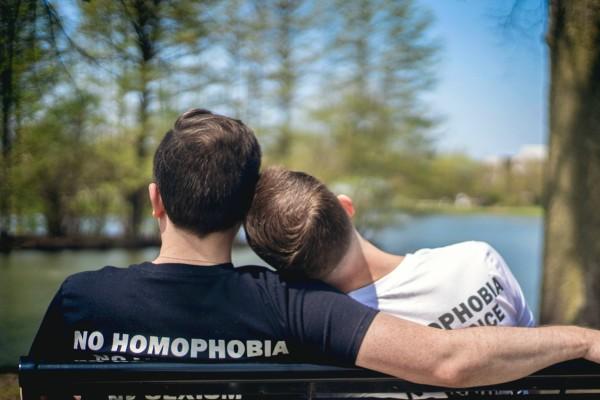
For Teachers & Professionals
Heteronormative Sexual Education and the Need for Sexual Education for Males who have Sex with Males
Sexual education is often based on a heteronormative model of sexuality defined as monogamous, marital, middle-class, and white heterosexuality. Current sexual education programs do not meet the needs of adolescent males who are interested in sex with males (AMSM). Despite the increased risk, AMSMs are less likely than their heterosexual peers to receive relevant sexual education in school and thus may be more likely to engage in sexually risky behaviours. They are likely to turn to the Internet, including online pornography, to learn about male-male sexual relationships.
Sexual education programs, especially those that address male-male sexual behaviours are limited and are essential to decrease HIV/STIs among AMSM. Other topics frequently addressed are birth control, and how to say no to sex, and this means that topics are often adopted from the heteronormative ones. To find more specific information, adolescents turn to the internet. In parallel, educators report poor access to information, training and resources as primary reasons to not include more specific information.
Moreover, in areas that implement abstinence-only curricula, students may hear messages that:
• Promote fear of same-sex attraction: “Young persons may sense affection and even infatuation for a member of the same sex. This is not the same thing as ‘being’ homosexual. Any same-sex ‘sexual experimentation’ can be confusing to young persons and should be strongly discouraged.”
• Reinforce gender stereotypes and heterosexual relationships: “What do guys talk about in the locker room? What do girls talk about at sleepover parties?”
• Mandate heterosexual marriage: “The only safe sex is in a marriage relationship where a man and a woman are faithful to each other for life.”
What should sex education for AMSM include?
1. Information for all students about sexual orientation and gender identity;
2. That ‘different types of committed, stable relationships’ includes same-sex relationships;
3. How to safely have anal sex and the types of sex you can have with a male partner;
4. How to use a condom and how to use lubrication;
5. How to recognize bullying, including online bullying, and how to respond to it safely, in line with your setting’s policies. How to set boundaries around personal internet usage and protect emotional well-being online;
6. The law that says that same-sex couples can get married and adopt children;
7. How to support good mental health and emotional well-being, including through safe, age-appropriate access to a community with other LGBTQ+ young people. Which local and national support services LGBTQ+ young people can access confidential advice, information and support.
It will be important for educators to add these topics when designing sexual education programs. Teachers should be aware that the same principles of respect, consent and safety apply to all young people, whether they are LGBTQ+ or not. It is good practice to ensure that the case studies, examples, videos etc include LGBTQ+ people.
REFERENCES
O'Farrell, M., Corcoran, P., & Davoren, M. P. (2021). Examining LGBTI+ inclusive sexual health education from the perspective of both youth and facilitators: a systematic review. BMJ open,11(9), e047856. https://doi.org/10.1136/bmjopen-2020-047856
Stonewall. (2015). Getting Started Toolkit (Secondary Schools). Stonewall. Retrieved 2022, from https://www.stonewall.org.uk/resources/getting-started-toolkit-secondary-schools
Share the knowledge!
More For Teachers & Professionals Q&A

Addressing Young Women's Sexual Health in a Non-Judgmental Way

Intercultural Communication

The PANTS lesson plan

LGBTQIA+ Community and Health Care Services

The Characteristics of Sex Education Teachers

Teaching consent to Young children (8 – 12 years old)
This is a website that WE are building together. If you have a question there is no answer to on this site, send it here!
